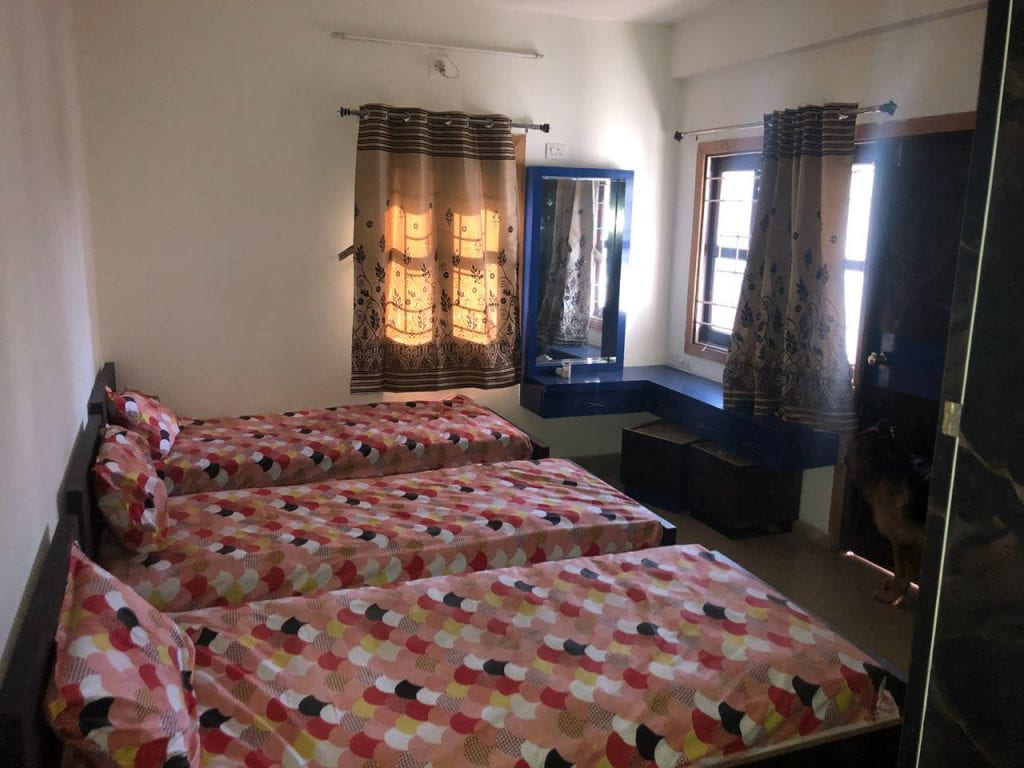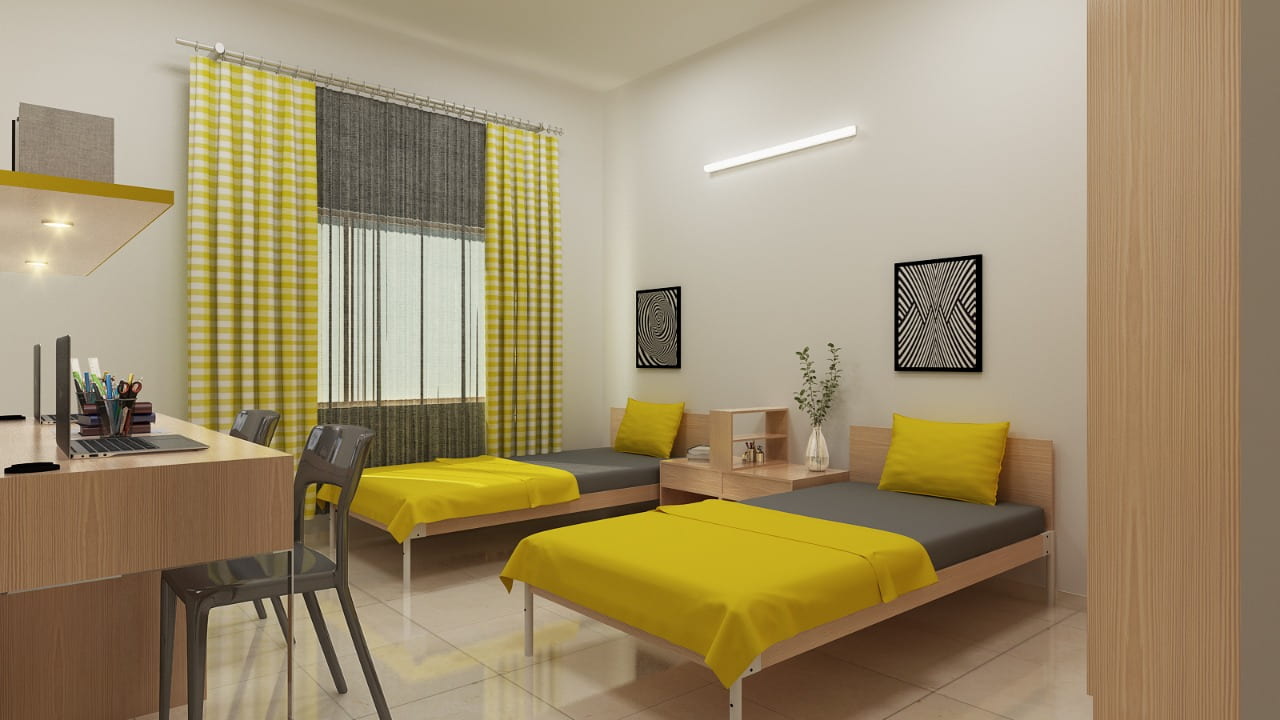
India, a country with one of the largest steadily growing economies in the world, is home to the second-largest student population pursuing post-secondary education. The current gross enrollment ratio (GER) in post-secondary education is 26.3% (Ministry of Human Resource Development, 2019). In addition, the Indian government has set a target to enroll 30% of the youth (ages 18-23) into a university by 2020 (Government of India, 2013). Thus, the number of students enrolled is set to increase from 34 million to 40 million (Ministry of Human Resource Development, 2019). While the student population has increased rapidly over the years, student housing supply has failed to keep up with this increasing demand. This article, part of a two – part series on student housing in India covers the present market scenario. Changing demographics and increasing student aspirations for better accommodation on the demand side and under supply of quality housing on the supply side present a $50 billion opportunity for Purpose Built Student Accommodation (PBSA) in the coming years (Knight Frank, 2019).
Currently, on-campus housing fulfills 20% of total demand while the remaining need is fulfilled by unorganized small aggregators of existing built space who lease out residential units to students. Most university campuses located in urban areas are unable to expand existing student housing due to either a lack of greenfield land or a lack of initiative by the universities on account of time-consuming bureaucratic approvals. Existing capacity is limited, and development has not kept pace. The current pipeline of PBSA is estimated to be around 1.6 million beds, while the demand for student housing is estimated to be closer to 8 million beds, which is projected to rise at 8% per year, reaching 13 million beds in 2025 (Knight Frank, 2019).
Demographic and social factors impacting a student’s pursuit of higher education in India are different from those of other global educational hubs. A typical Indian student’s cost of education including tuition, accommodation, food, and travel, is financed by the student’s parents through either household income, savings, and/or borrowing. It is common for students to continue living with their parents when they study in the same geography, and this is an accepted social norm and not considered “freeloading”. Therefore, the majority of demand for student housing actually arises from students choosing to attend colleges in cities that are away from their hometown.
The two major cities with the highest density of migrant student populations are Bangalore and Pune. Bangalore, center of the Silicon Valley of India, attracts a large population of migrant students annually as a result of a high concentration of colleges that are located in the vicinity of a number of high employment opportunities. Pune is a unique market where 90% of the colleges are privately owned, creating a market for privately-owned student accommodation. As more millennial-aged students congregate in city centers, there is an increasing stress on the existing supply of student housing in university cities such as Bangalore and Pune.
The changing economic conditions, including a more prosperous middle class that has a greater demand for post-secondary education, this also one of the demand drivers for student housing in India. The annual GDP per capita grew by 7% from $2,037 in 2018 to $2,172 in 2019 (October). It is projected to rise by 8% every year until 2024 (International Monetary Fund, 2019). Given this trend, the middle class is becoming more aspirational and willing to spend a larger share of their disposable income on higher education. The per capita spending on education, as a percentage of total spending, increased from 3.7% in 2013-14 to 4.3% in 2017-18 and grew at 14% on average annually from 2013-14 to 2017-18 (Value Champion, n.d.).
Another important demand driver for better quality student housing is the changing expectations of Indian students. Present-day students expect an augmented experience—they want to attend universities that offer more than just a traditional education. In recent years, Indian education has become more focused on the holistic experience, an important component of which is quality housing. India has a serious lack of Purpose Built Student Accommodations (PBSAs), which are designed around the needs and requirements specific to college students. The current student housing stock comprises residential buildings with rental units, which are leased as Paying Guest (PG) accommodations. While most of these properties are located in close proximity to college campuses, they are generally poorly maintained, with deteriorating conditions that are unhygienic or unsafe and amenities that are of poor quality or non-existent.

Most units fail to offer basic amenities such as hot water, reliable Wi-Fi connectivity, or laundry services. Even worse, there is a lack of hospitality from management staff that leads to more stress and anxiety for students and their parents. Although a majority of these units offer a meal service, the quality and hygiene standards are sub-par in spite of this being a major consideration that influence students’ decision-making process at the time of their housing search.
The modern Indian university student requires a strong and supportive community, both in terms of peers and accommodation. Gone are the days when a small room and a substandard meal would suffice. In the past, students have had no choice but to accept poor living conditions. However, as students’ expectations have evolved, developers and owner/operators in the PBSA space have arisen to cater to this demand.

Presently, there are only a few small first movers in this space. Most of these companies have been incorporated within the past five years, hinting at a shift in the mindsets of developers of student housing. As the market for PBSAs remains mostly unexplored in India, it offers an opportunity to both domestic and international developers, investors and operators/managers of student housing. While the opportunity to tap into the demand for student housing exists, a pioneering developer would have to deal with political, social, and economic challenges before truly establishing their presence in the market. The second part (Link to Part 2) of this essay will describe the current challenges and proposed solutions for student housing in India.
References
Government of India. (2013). Twelfth Five Year Plan (2012 – 2017) , Social Sectors – Volume III. Planning Commission. New Delhi: SAGE Publications India Pvt Ltd.
International Monetary Fund. (2019, October). World Economic Outlook. Retrieved from International Monetary Fund: https://www.imf.org/external/datamapper/NGDPDPC@WEO/IND
Knight Frank. (2019, May). Global Student Property Report 2019. Retrieved from Knight Frank: https://content.knightfrank.com/research/1775/documents/en/global-student-property-report-2019-may-2019-6426.pdf
Ministry of Human Resource Development. (2019). All India Survey on Higher Education. Department of Higher Education, New Delhi.
Value Champion. (n.d.). Average Consumer Spending in India. Retrieved from Value Champion: https://www.valuechampion.in/credit-cards/average-consumer-spending#current
